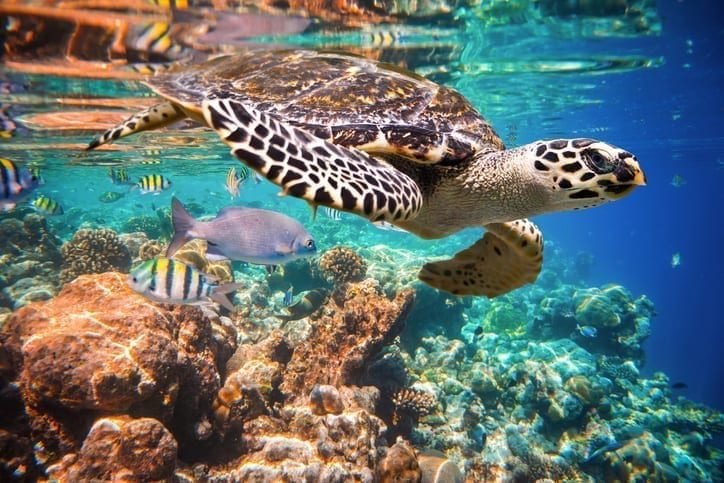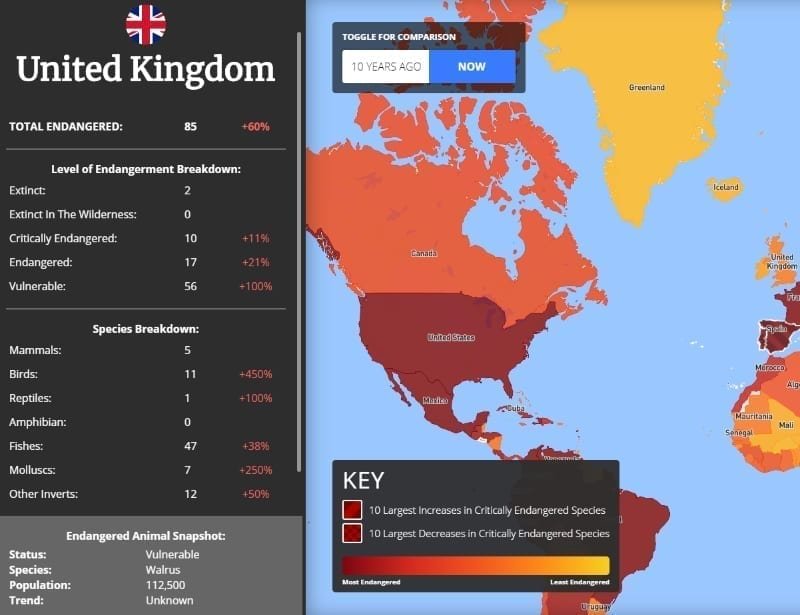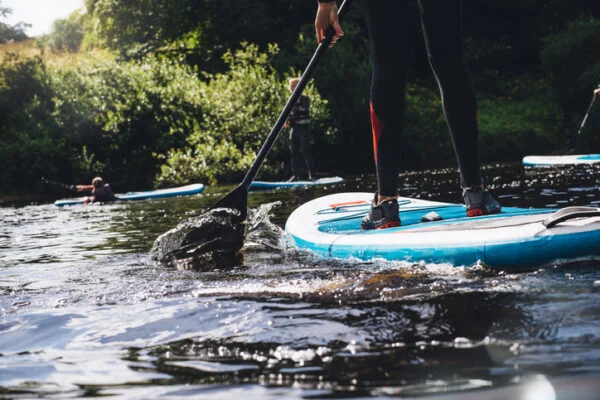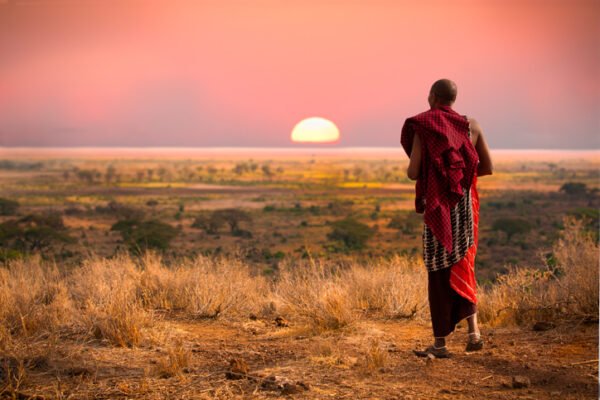New research reveals that agriculture and aquaculture is the biggest threat to endangered species, including the fishing and harvesting of aquatic resources, the production of food and livestock farming.
7,522 species are currently threatened as a result of agriculture and aquaculture, 2,562 of which are critically endangered. The second biggest threat is biological resource use, which could impact 2,406 critically endangered species.
Climate change and pollution continue to rise as threats; severe weather, changing ecosystems and rising temperatures are responsible for 33 animal extinctions, while pollution is responsible for 37 extinctions to date, the data show.
Mapping endangered species
Animal Endangerment Map collates and analyses official conservation reports to reveal the species that are currently classed as extinct, endangered and vulnerable around the world.
The research also shows how conservation efforts have changed over the past decade, showing which countries have experienced the greatest number of animal extinctions to date.
1/4 species at risk of extinction
In 2019, more than 28,000 species are threatened with extinction worldwide – representing more than a quarter (27%) of all assessed species.
The United States has experienced the most animal extinction with 237 species reported to have died out prior to 2018, followed by French Polynesia with 59 extinctions, Mauritius with 44 and Australia with 40.
Every 22 known species of ape are now endangered, and seven primate species are at a particularly high risk of extinction as a result of deforestation, hunting and agriculture. This includes roloway monkeys found in Côte d’Ivoire and Ghana who have a remaining population size of just 2,000.
The US also claimed the highest number of endangered species in 2018 with 1,046, representing a 9.87% increase over the past decade. This figure has since risen to 1,064 in 2019, showing a 1.72% increase over the past year alone.
69% of the 494 critically endangered species in the US are predicted to continue to decline in the future, with 48 species expected to suffer as a result of wastewater, industrial and agricultural effluents, rubbish, pollutants and excess energy pollution. This list consists of one plant and 47 animal species, including eight species of bumblebee.
 Play Video about This Rock Might Just Save The World
Play Video about This Rock Might Just Save The World Play Video about Play 2 hours of rock
Play Video about Play 2 hours of rock Play Video about Play 2 hours of brook
Play Video about Play 2 hours of brook Play Video about Play 2 hours of sheep
Play Video about Play 2 hours of sheep












































